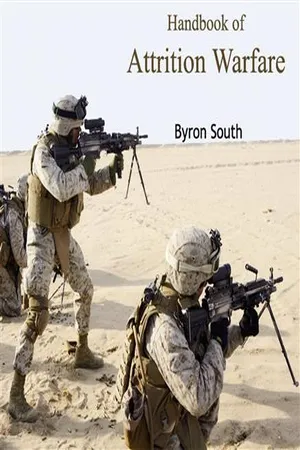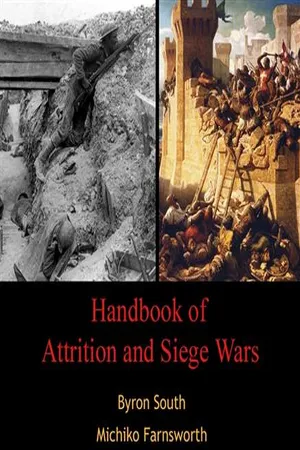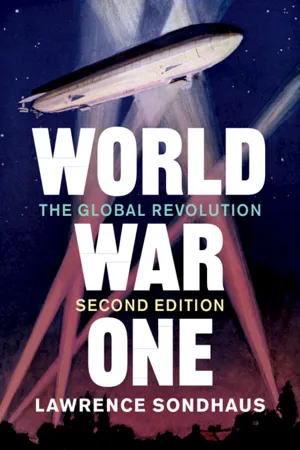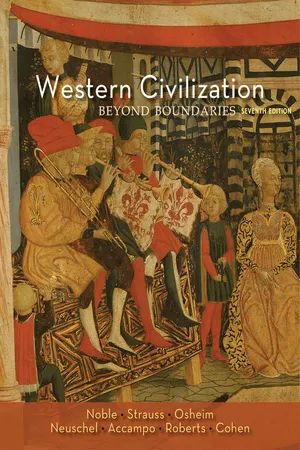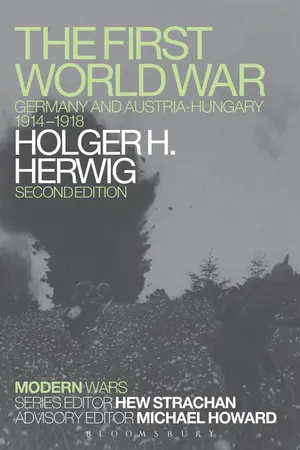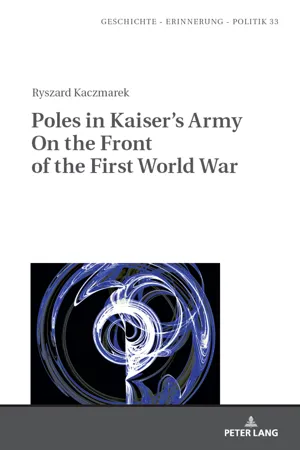History
Battle of Verdun
The Battle of Verdun, fought during World War I from February to December 1916, was one of the longest and deadliest battles in history. It was a major confrontation between the German and French armies, resulting in massive casualties and extensive destruction. The battle is remembered for its strategic significance and the immense human suffering endured by both sides.
Written by Perlego with AI-assistance
Related key terms
1 of 5
9 Key excerpts on "Battle of Verdun"
- No longer available |Learn more
- (Author)
- 2014(Publication Date)
- University Publications(Publisher)
Verdun was the longest battle and one of the most devastating in the First World War and more generally in human history. A total of about 40 million artillery shells were exchanged by both sides, leaving behind millions of overlapping shell craters that are still partly visible today. In both France and Germany, Verdun has come to represent the horrors of war, similar to the significance of the Battle of the Somme to the United Kingdom. Major General Julian Thompson, a renowned British military historian, has referred to Verdun as France's Stalingrad. The Battle of Verdun popularized General Robert Nivelle's: They shall not pass , a simplification of the actual French text: Vous ne les laisserez pas passer, mes camarades (You will not let them pass, my comrades), on record in Nivelle's official order of the day of 23 June 1916. (in: Denizot, 1996, Verdun 1914 –1918, N.E.L., Paris, ISBN 2-7233-0514-7). At the beginning of the battle, on 16 April 1916, general Philippe Pétain had also issued a stirring order of the day, but it was optimistic: Courage! On les aura (Courage! We shall get them). Nivelle's admonition, on the other hand, betrays concern over the morale problems which began to manifest themselves at Verdun in June 1916. The mounting horror of the fighting conditions and above all else, Nivelle's abrupt command style following after Petain's genuine concern for the troops, contributed to several cases of collective indiscipline at Verdun during the summer of 1916. This disquiet would later reappear in greatly amplified and widespread form with the French army mutinies that followed after the Nivelle offensive of April 1917. Historical background For centuries, Verdun had played an important role in the defence of its hinterland, due to the country's strategic location on the Meuse River. Attila the Hun, for example, failed in his 5th-century attempt to seize the town. - No longer available |Learn more
- (Author)
- 2014(Publication Date)
- College Publishing House(Publisher)
Verdun was the longest battle and one of the most devastating in the First World War and more generally in human history. A total of about 40 million artillery shells were exchanged by both sides, leaving behind millions of overlapping shell craters that are still partly visible today. In both France and Germany, Verdun has come to represent the horrors of war, similar to the significance of the Battle of the Somme to the United Kingdom. Major General Julian Thompson, a renowned British military historian, has referred to Verdun as France's Stalingrad. The Battle of Verdun popularized General Robert Nivelle's: They shall not pass , a simplification of the actual French text: Vous ne les laisserez pas passer, mes camarades (You will not let them pass, my comrades), on record in Nivelle's official order of the day of 23 June 1916. (in: Denizot, 1996, Verdun 1914 –1918, N.E.L., Paris, ISBN 2-7233-0514-7). At the beginning of t he battle, on 16 April 1916, general Philippe Pétain had also issued a stirring order of the day, but it was optimistic: Courage! On les aura (Courage! We shall get them). Nivelle's admonition, on the other hand, betrays concern over the morale problems which began to manifest themselves at Verdun in June 1916. The mounting horror of the fighting conditions and above all else, Nivelle's abrupt command style following after Petain's genuine concern for the troops, contributed to several cases of collective indiscipline at Verdun during the summer of 1916. This disquiet would later reappear in greatly amplified and widespread form with the French army mutinies that followed after the Nivelle offensive of April 1917. Historical background For centuries, Verdun had played an important role in the defence of its hinterland, due to the country's strategic location on the Meuse River. Attila the Hun, for example, failed in his 5th-century attempt to seize the town. - eBook - PDF
Fighting the Great War
A Global History
- Michael S. Neiberg, Michael S. NEIBERG(Authors)
- 2009(Publication Date)
- Harvard University Press(Publisher)
Verdun thus became the battle of attrition that Falkenhayn had envisioned. Contrary to his plan, however, the battle wore down both sides. The mammoth struggle shaped the destinies of the German and French armies through 1917 and 1918 and well be-171 . the agony of verdun . The peaceful village of Vaux sat along the front lines during several major offensives, including Verdun. The American Second Division finally captured the town for the Allies in July 1918. (United States Air Force Academy McDermott Library Special Collections) [To view this image, refer to the print version of this title.] yond. It also led to the removal of Joffre, who was blamed for his inattention to Verdun in 1915 and held responsible for the massive casualties of 1916. To soothe the transition, the government resur-rected the rank of marshal, which had been out of use since 1871, and named Joffre the Third Republic’s first man to hold the rank. In his place came Robert Nivelle, who promised French and Brit-ish politicians that he could repeat his successful Verdun formula across the western front. The bloodletting at Verdun reached far beyond the two armies directly involved. Verdun had an important effect on the British, Russian, Italian, Austro-Hungarian, and Romanian armies as well. Verdun became synonymous with sacrifice, death, and battles that defied the traditional definitions of winning and losing. One French veteran’s recollection of the battle accurately sums up the state of the French and German armies at the start of 1917: “We waited for the fatal moment in a sort of stupor . . . in the middle of a de-mented uproar. The entire French army had passed through this trial.” 16 Whether that army could survive 1917 remained an open question in the minds of many on both sides. war in the third dimension Among its other notable characteristics, Verdun gave birth to the modern notion of air warfare. - eBook - PDF
Pandora’s Box
A History of the First World War
- Jörn Leonhard, Patrick Camiller(Authors)
- 2018(Publication Date)
- Belknap Press(Publisher)
Verdun’s value as a cornerstone of France’s defenses may not yet have been nullified, but it has been greatly reduced, and its importance as a bridgehead and base for attack has been completely eliminated.”45 In essence, Falkenhayn’s strategy at Verdun had been a failure: the battle had not weakened but strengthened the defensive resolve of French politi-cians. Similarly, the British would later show at the Somme that, despite terrible casualties, there could be no question of their leaving the alliance and withdrawing from the European battlefield. But no less important, as at the Marne in Fall 1914, were the contrast between positive and negative myths surrounding the battle; the focus on the two enemies, France and Germany; and the symbolic political charge on both sides, which began with the battle itself and extended into the post-1918 cultures of remembrance. The dash-ing of high German hopes gave rise to explanatory constructs, as after the battle of the Marne and again in 1918–1919 with the “stab in the back” myth.46 Not only military leaders but also the home front were made responsible for the bloodletting that marked the image of the “Verdun fighter” in countless 404 | Wearing Down and Holding Out memoirs. The vision of patriotic sacrifice and heroic death in battle, in a just war to defend the fatherland, lost more and more of its credibility.47 In the scale of violence in a limited space, the all-out mobilization and symbolic concentration in one place, Verdun acquired the same kind of significance that attached to Stalingrad in the Second World War.48 The gap between expectations and results also had political consequences, and soon the public reputation of leading military and political players was on the line. The battle advanced and destroyed careers in short order: while it consolidated the image of Pétain as national savior and of Nivelle as energetic commander, the former commander, Joffre, came under intense pressure. - eBook - PDF
World War One
The Global Revolution
- Lawrence Sondhaus(Author)
- 2020(Publication Date)
- Cambridge University Press(Publisher)
Nivelle initiated the French attack and quickly eclipsed Pétain as the hero of Verdun. He enjoyed the support of Joffre, who visited frequently during the autumn weeks, and the able assistance of the new commander of the Verdun forts, General Charles Mangin, most recently commander of the Third Army. The French began to employ the creeping barrage tactic adopted by the British at the Somme in mid-July, in which the shells rained down just in front of the advancing infantry, cre- ating the opportunity for them to take enemy trenches before the defenders could come out from under cover to resume their normal defensive positions. They made the tactic more effective by having their infantry advance much closer (just 90–100 yards or 80–90 m) behind the curtain of falling steel. The counteroffensive also fea- tured new 400 mm howitzers mounted as railway guns, equivalent (if not superior) to Krupp’s “Big Bertha.” Firing from tracks 8 miles (13 km) southwest of Verdun, their shelling set both Fort Douaumont and Fort Vaux ablaze on October 23; a Moroccan regiment stormed the former on the 24th, and French forces finally secured the latter on November 2. The counteroffensive continued until December 18, by which time the front line at the center of the Verdun salient in Caumieres Wood stood just half a mile (0.8 km) south of its original location. The ten months of fighting generated 377,000 French casualties against 337,000 German. Officially, the French acknowl- edged 162,000 dead, the Germans 82,000, though the latter likely topped 140,000. raising the stakes: europe, 1916 184 The Battle of Verdun certainly ranked as the most geographically concentrated pro- longed bloodletting of the war, as virtually all of its dead fell within an area of 10 square miles (26 km 2 ), within which 10 million shells were fired, equaling 1.35 million tons of steel. - eBook - PDF
Western Civilization
Beyond Boundaries
- Thomas F. X. Noble, Barry Strauss, Duane Osheim, Kristen Neuschel(Authors)
- 2013(Publication Date)
- Cengage Learning EMEA(Publisher)
To assault the fortress, the Germans gathered 1,220 pieces of artillery for attack along an 8-mile front. Included were thirteen “Big Bertha” siege guns, weapons so large that nine tractors were required to position each of them; a crane was nec- essary to insert the shell, which weighed over a ton. The level of heavy artillery firepower that the Germans applied at Verdun was unprecedented in the history of warfare. German forces attacked on February 21, taking the outer defenses of the fortress, and appeared poised for victory. The tide turned, however, when General Philippe Pétain (pay- TANH) (1856–1951) assumed control of the French defense. Pétain had the patience and skill necessary to organize supply networks for a long siege. Furthermore, he proved able, through considerate treatment, to inspire affection and confidence among his men. By mid- July, the French army had repelled the German offensive, although only in December did the French retake the outer defenses of the fortress. The French had held in what would prove the war’s longest, most trying battle—one that killed over 700,000 people. To relieve pressure on Verdun, the British led a major attack at the Somme River on July 1, 1916. On that day alone, the British suffered almost 60,000 casualties, including 21,000 killed. Fighting continued into the fall, but the offensive proved futile in the end. One-third of those involved, or over 1 million soldiers, ended up dead, missing, or wounded. Dominated by the devastating battles at Verdun and the Somme, the campaigns of 1916 finally extinguished the high spirits of the summer of 1914. Both sides suffered huge losses— apparently for nothing. By the end of 1916, the front had shifted only a few miles from its location at the beginning of the year. *The remarks of Raymond Joubert, as quoted in John Ellis, Eye-Deep in Hell: Trench Warfare in World War I (Baltimore: Johns Hopkins University Press, 1989), p. - eBook - PDF
War and Cultural Heritage
Biographies of Place
- Marie Louise Stig Sørensen, Dacia Viejo-Rose(Authors)
- 2015(Publication Date)
- Cambridge University Press(Publisher)
C H A P T E R T W O ‘THE CEMETERY OF FRANCE’: RECONSTRUCTION AND MEMORIALISATION ON THE BATTLEFIELD OF VERDUN (FRANCE) Jean-Paul Amat, Paola Filippucci, and Edwige Savouret INTRODUCTION ‘Here is the cemetery of France’: with these words French President Michel Lebrun described the Ossuary at Douaumont at its inauguration ceremony in 1932 (see IOD 1932: 55). The Ossuary and its adjacent cemetery were created to hold the bodies and scattered bones of the approximately 150,000 soldiers fallen on the battlefield of Verdun in 1916, during what is widely considered ‘the worst battle in history’ (Horne 1993: 327; cf. Prost 2002a). The battle in February to December 1916 resulted in around seven hundred thousand combined French and German casualties (of which approximately five hundred thousand dead). The huge number of casualties is linked with the (unofficial) aim of the battle to exhaust the French army by attacking a target that they were honour-bound to defend in spite of its relatively minor strategic importance (see Brown 2003: 37ff.; Horne 1993: 5, 46ff.). Verdun was symbolic as a fortress associated with the long history of France (it is here that Charlemagne divided his empire amongst his sons in 843) and as the last line of defence between Paris and the fortifications farther east, such as Metz, formerly defending the Franco-German border and lost to Germany in 1870 (e.g., Brown 2003: 25ff.; Horne 1993: 5). Its history made the fortress-city of Verdun a key lieu de mémoire [site of memory] for the French in 1916 (Prost 2002a; cf. Nora 1989), partially explaining why the battle was fought here, and with such brutal tenacity on both sides. 46 The aftermath of the battle saw the creation of a monumental and memorial landscape on the battlefield, an area to the north of the city utterly devastated by the heaviest artillery bombardment the world had ever seen (Horne 1993). - eBook - PDF
The First World War
Germany and Austria-Hungary 1914-1918
- Holger H. Herwig(Author)
- 2014(Publication Date)
- Bloomsbury Academic(Publisher)
51 The German Sixth Army surrendered to the Soviets 2 months later. Perhaps the final word should go to Michael Geyer, a scholar of the German Army in the twentieth century. ‘More than any other battle, Verdun showed the military impasse of World War I, the complete disjuncture between strategy, battle design, and tactics, and the inability to use the modern means of war. But most of all, it showed, at horrendous costs, the impasse of professional strategies.’ 52 The Somme: ‘Battles of material’ Not surprisingly, the French turned for relief to their allies. As early as 6 December 1915 British, French, Italian, Russian and Serbian generals had met at Chantilly to plan a massive concentrated attack against the Central Powers on all fronts. Specifically, French forces were to spearhead an assault along the Somme River. The German operation against Verdun of course pre-empted that plan – and shifted the main burden from the French Army to the BEF. General Haig was quite prepared to show the Germans ‘the fighting will of the British race’. On 26 May 1916 Joffre met with Haig at Beauquesne and chose the salient from Beaumont-Hamel down to the DUAL DEFEATS: FROM THE MEUSE TO THE SIRET, 1916 195 marshes of the Somme River for a joint Anglo-French counterattack. Plans for the assault were formalized 5 days later in President Poincaré’s Pullman car south of Amiens. The British Fourth Army of Henry Rawlinson and the Third Army under Edmund Allenby, with 14 infantry divisions and four in reserve, would attack north of the Somme on 1 July. Concurrently, French General Ferdinand Foch’s Army Group of the North with 5 infantry divisions (and six in reserve) would strike out from its position south of the river. Opposing them were 7 divisions of Fritz von Below’s German Second Army. The BEF and the French had a three-to-one superiority (386 vs. 129 craft) in the air and virtual artillery supremacy: 1655 to 454 light, 933 to 372 medium and 393 to 18 heavy guns. - Ryszard Kaczmarek(Author)
- 2020(Publication Date)
Verdun 195 everything turned bright for a while, at that moment, everyone crouched very low, near the ground� Despite nighttime, gunshots constantly ripped the air� Suppresing fire fero- ciously cleared the no man’s land back and forth� Aircrafts circled above the entrenched positions from dawn till dusk� They noticed even the smallest motion� They determined the places between which the soldiers built any path between trenches that could show communication routes� They noticed every new trench that appeared during the con- struction of a dugout� It was at that time when Verdun became the synonym of this war, an all-crushing “mill,” “hell,” “fire barrage for the entire Germany�” 562 The fights were so fierce that – since the beginning of the German offensive on March 6 – Côte 304 lost thiry meters of its height as a result of the shelling and explosions� As later description of the battle show, “the seizure of enemy positions is bloody and horrible, but keeping them is true hell�” 563 The assault on March 22 cost the 22 nd Regiment as many as twenty fallen officers and 608 soldiers; over 20 percent of its initial composition after only two days of combat� 564 This bloody day caused huge losses also in other German troops that participated in the assault� Three thousand soldiers fell while Côte 304 remained unconquered, which allowed the French artillery to continue the shelling of German positions� The commander of the French Second Army, former brigadier general Philippe Pétain, could report two days later to the pres- ident of France, Raymond Poincaré, whoo visited this segment of the frontline, that the French managed to maintain the defense and uninterrupted communi- cation with the support area through the famous Sacred Way (la Voie Sacrée); the only way from the French side that allowed the transportation of supplies and soldiers� 565 The fights for Côte 304
Index pages curate the most relevant extracts from our library of academic textbooks. They’ve been created using an in-house natural language model (NLM), each adding context and meaning to key research topics.
